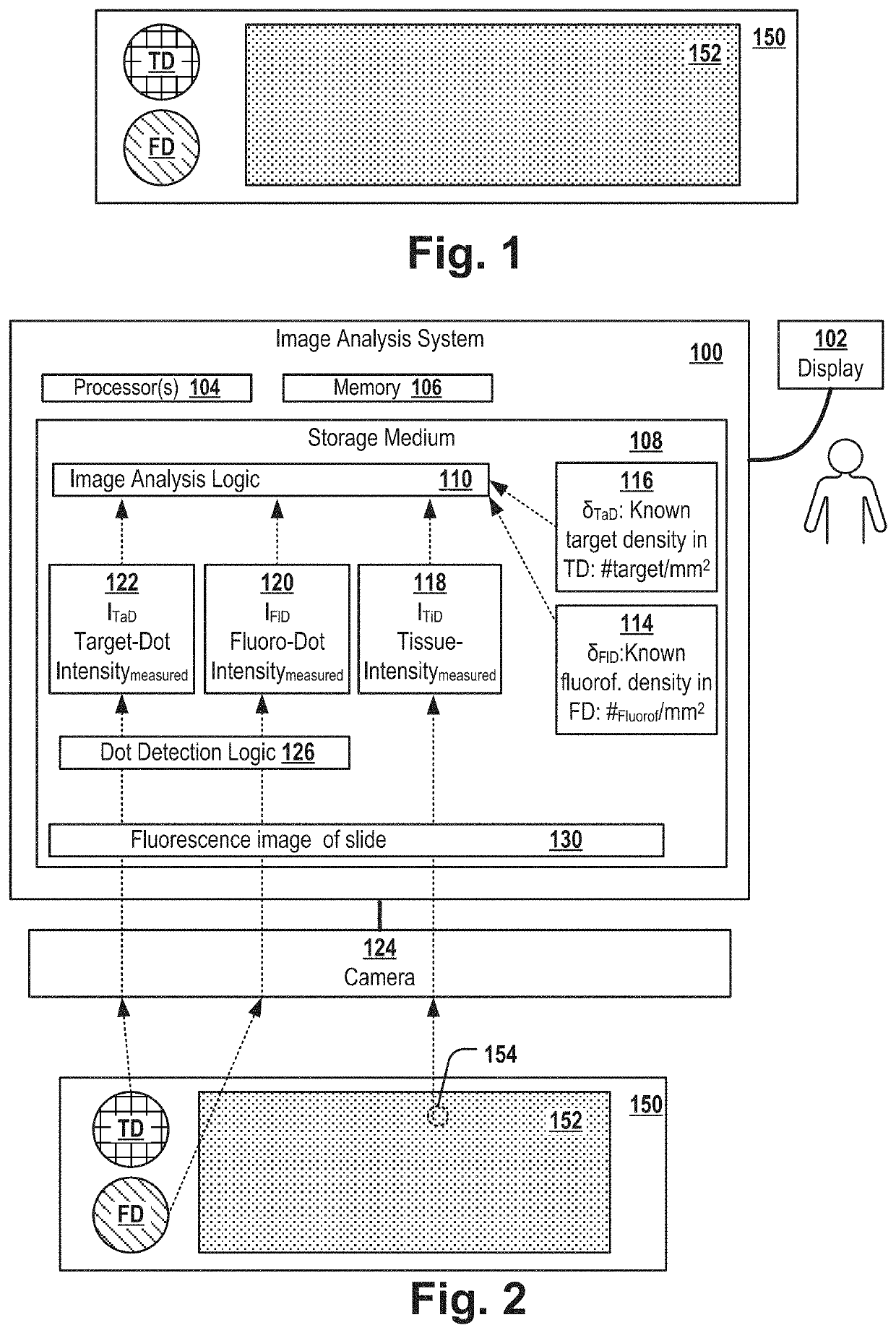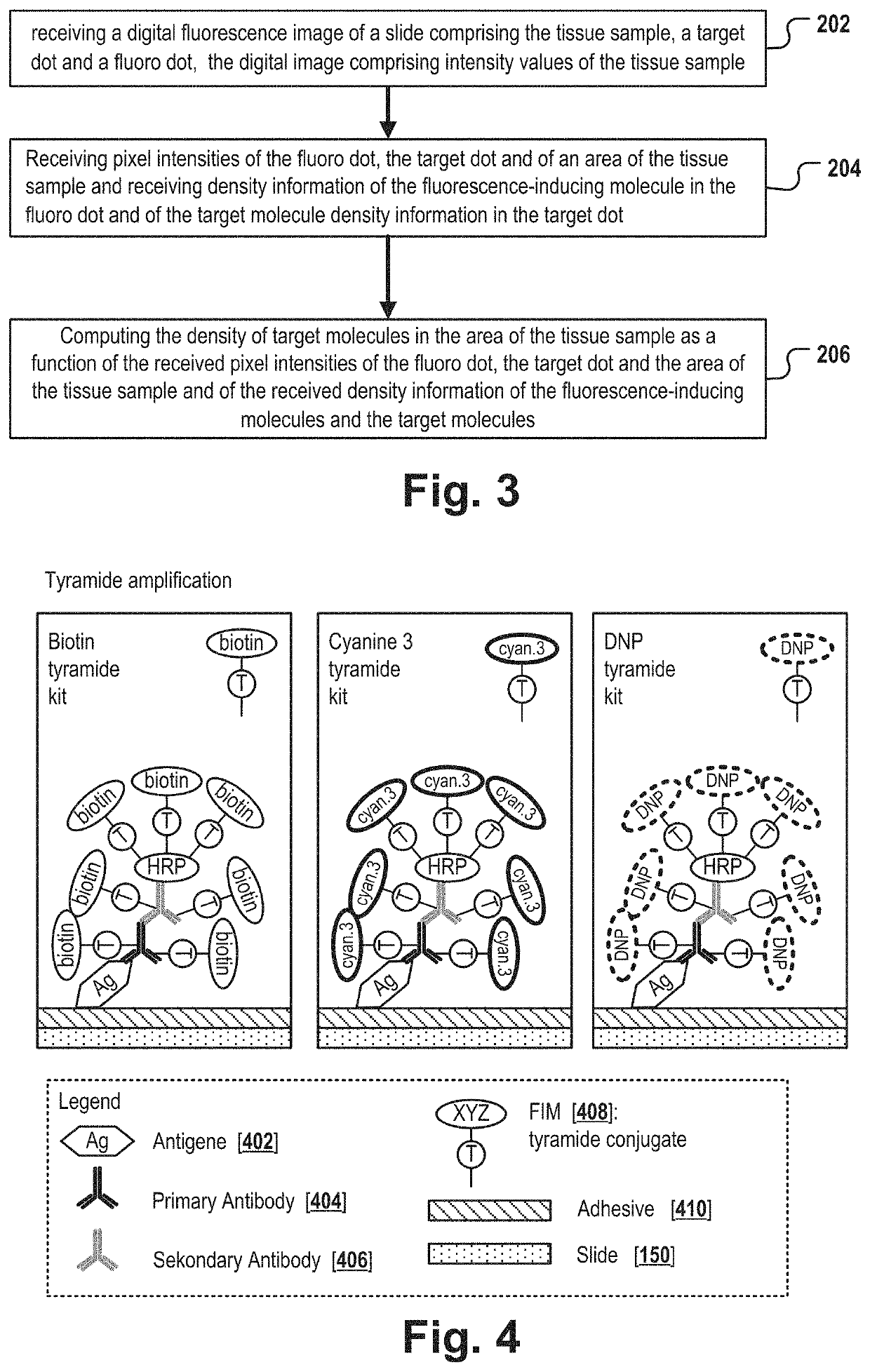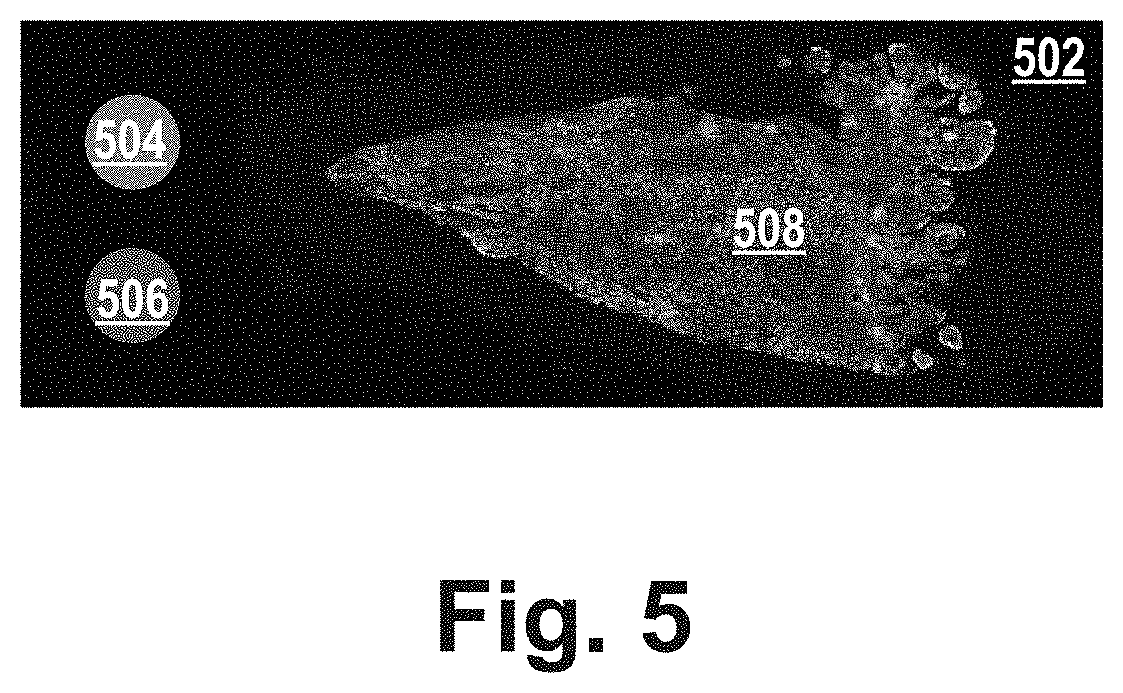Target molecule density determination in a fluorescence image
a fluorescence image and target molecule technology, applied in the field of image analysis, can solve the problems of inability to accurately compare expression levels, inability to accurately quantify the effect of a particular anti-, and both methods tend to be complex, so as to improve the accuracy of detection and detection, computationally eliminate the impact of parameters, and normalize acquired intensity information
- Summary
- Abstract
- Description
- Claims
- Application Information
AI Technical Summary
Benefits of technology
Problems solved by technology
Method used
Image
Examples
Embodiment Construction
[0110]FIG. 1 shows a slide 150 that comprises a fluoro dot FD, a target dot TD and a tissue sample. The slide can be, for example, a glass tissue slide. In a first area FD referred herein as “fluoro dot”, the slide is covered by fluorescence-inducing molecules of a known molecule density. In a second area TD referred herein as “target dot”, the slide is covered by target molecules of a known molecule density. In a third area of the slide, the slide comprises a tissue sample 152, e.g. of a mammal, e.g. a tissue sample of tumor tissue of a patient.
[0111]Typically, the slide is used for examining the location of a particular type of molecule of interest, referred herein as “target molecule” and for determining the density (e.g. the “expression level” in case the target molecule is a protein) of the target molecules in the tissue sample. For example, the target molecules can be a biomarker for a particular tumor-subtype, e.g. Her2, BRCA1, BRCA2 or the like.
[0112]The target dot TD compri...
PUM
| Property | Measurement | Unit |
|---|---|---|
| radius | aaaaa | aaaaa |
| radius | aaaaa | aaaaa |
| size | aaaaa | aaaaa |
Abstract
Description
Claims
Application Information
 Login to View More
Login to View More - R&D
- Intellectual Property
- Life Sciences
- Materials
- Tech Scout
- Unparalleled Data Quality
- Higher Quality Content
- 60% Fewer Hallucinations
Browse by: Latest US Patents, China's latest patents, Technical Efficacy Thesaurus, Application Domain, Technology Topic, Popular Technical Reports.
© 2025 PatSnap. All rights reserved.Legal|Privacy policy|Modern Slavery Act Transparency Statement|Sitemap|About US| Contact US: help@patsnap.com



